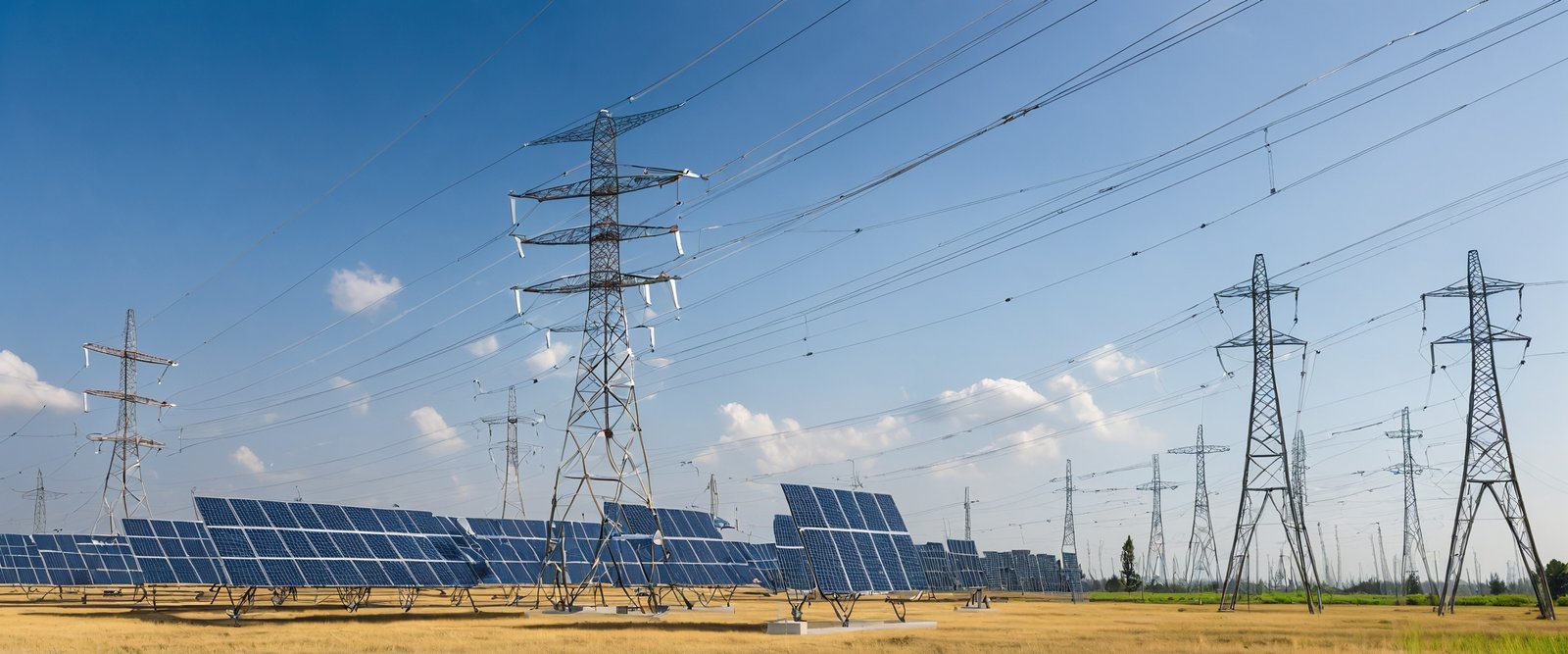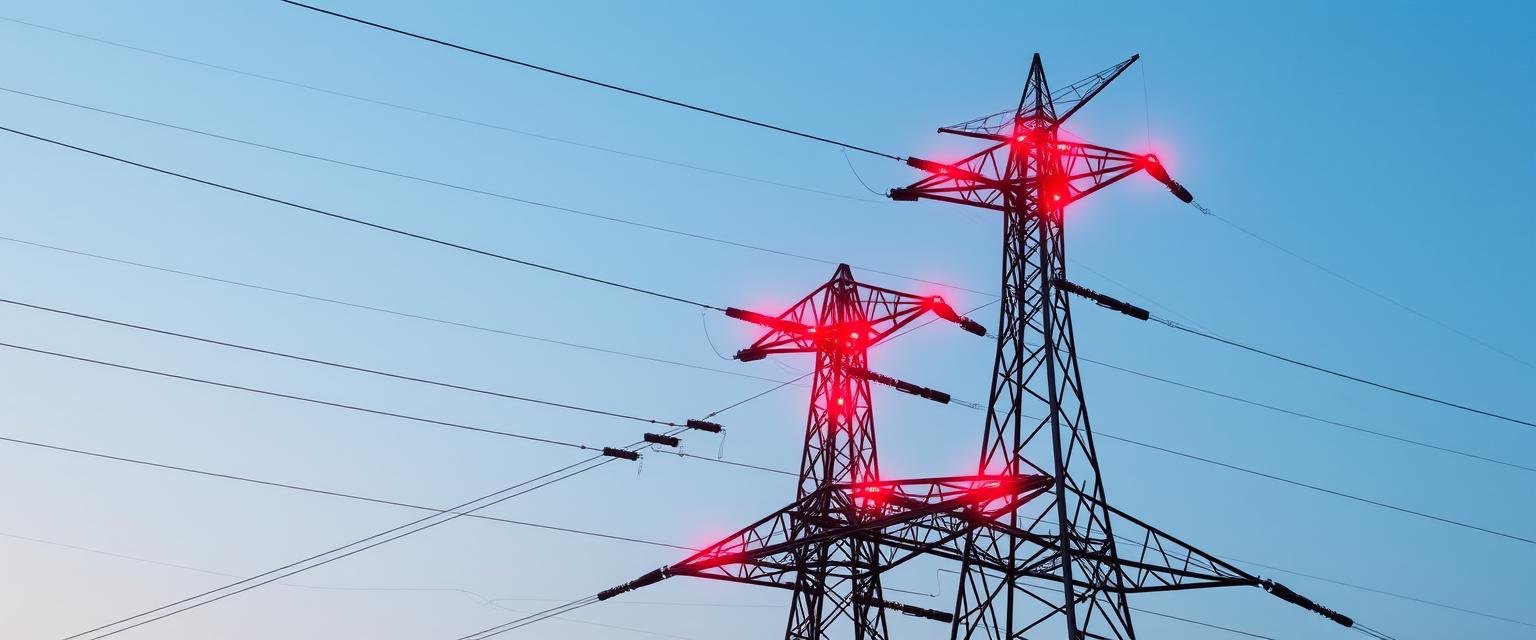High-voltage direct current (HVDC) transmission is a technology used to transmit electricity over long distances with high efficiency. This method has gained popularity due to its ability to reduce energy losses and connect power grids across regions, making it an essential part of modern power systems.
How Does the HVDC Transmission System Work?
HVDC transmission involves converting alternating current (AC) into direct current (DC) at the sending end, transmitting the DC over long distances, and then converting it back to AC at the receiving end. This process is highly efficient, especially for long-distance and underwater cables, as it minimizes energy losses.
Benefits of High-Voltage Direct Current Transmission Systems
HVDC systems offer several advantages, including:
- Reduced Power Losses: HVDC transmission is more efficient over long distances, reducing energy loss compared to AC transmission.
- Interconnection of Different Grids: HVDC allows for the connection of asynchronous grids, enabling the transfer of power between different regions.
- Improved Stability: HVDC systems contribute to the stability of power grids by controlling power flows and reducing the risk of blackouts.

Components of HVDC System
The HVDC system comprises several key components:
- Converter Stations: Convert AC to DC and vice versa.
- Transmission Lines: Carry the direct current over long distances.
- Filters and Capacitors: Minimize the ripple effect and stabilize voltage levels.
- Control Systems: Manage the operation and ensure the smooth functioning of the HVDC system.
Application of HVDC Transmission
HVDC transmission is used in various applications, including:
- Long-Distance Power Transmission: HVDC is ideal for transmitting power over vast distances, such as from remote power plants to urban centers.
- Undersea Cables: HVDC is the preferred choice for underwater power cables, such as those connecting offshore wind farms to the mainland.
- Interconnecting Grids: HVDC is used to link different power grids, allowing for efficient power transfer between regions.
Technical Equipment
Key technical equipment in HVDC transmission includes:
- Converters: Used to change AC to DC and back again.
- Thyristors and IGBTs: Semiconductors that control the flow of electricity in the converters.
- Transformers: Step up or step down the voltage levels as needed.
- Cooling Systems: Essential for maintaining the temperature of the electronic components.
Power Supply: Limit Values for Static and Low-Frequency Fields
Regulations and guidelines exist to limit exposure to static and low-frequency fields generated by HVDC systems. These limits are set to protect public health and ensure safe operation.
Potential Health Effects
While research continues, the potential health effects of exposure to HVDC-generated EMFs are considered minimal. Current studies indicate that HVDC systems pose no significant health risks when operated within established safety limits.
Effects on Animals and Plants
Studies on the effects of HVDC transmission on animals and plants have shown minimal impact. The static fields generated by HVDC are less likely to affect wildlife and vegetation compared to the alternating fields of AC systems.
HVDC Links Types
Different types of HVDC links are used depending on the application:
- Point-to-Point Links: Used for direct power transfer between two locations.
- Back-to-Back Links: Connect two asynchronous AC networks without a DC transmission line.
- Multi-Terminal Links: Connect more than two locations, allowing for more complex power distribution.
Dynamics of Modern Power Systems
The integration of HVDC transmission in modern power systems has revolutionized how electricity is distributed. HVDC allows for greater control over power flows, reduces the likelihood of grid failures, and facilitates the integration of renewable energy sources.
HVDC Transmission for Renewable Energy Integration
HVDC is crucial for integrating renewable energy sources, such as wind and solar, into the power grid. It enables the efficient transfer of power from remote renewable energy installations to urban centers, supporting the transition to a more sustainable energy system.
Economic Distance For HVDC Transmission Lines
The economic distance for HVDC transmission lines refers to the distance at which HVDC becomes more cost-effective than HVAC. Typically, this is around 600-800 kilometers for overhead lines and 50 kilometers for submarine cables.
Advantages of HVDC Transmission
- Lower Losses Over Long Distances
- Enhanced Grid Stability
- Ability to Connect Asynchronous Grids
- Reduced Infrastructure Costs in Certain Applications
Disadvantages of HVDC Transmission
- Higher Initial Costs: HVDC systems require more expensive converter stations.
- Complexity: The technology is more complex, requiring specialized knowledge for operation and maintenance.
- Limited Flexibility: HVDC is less flexible than HVAC in certain applications, such as local distribution.
Converting from AC to DC
Converting AC to DC is a critical step in HVDC transmission. This conversion is achieved through rectifiers, which are part of the converter stations. The process involves transforming the AC voltage into DC, which can then be transmitted over long distances with reduced losses.

Comparison of HVDC and HVAC Transmission
HVDC and HVAC transmission systems each have their advantages and disadvantages. HVDC is more efficient over long distances, while HVAC is more versatile for shorter distances and local distribution.
Is HVDC Better Than HVAC?
The choice between HVDC and HVAC depends on the specific application. For long-distance and underwater transmission, HVDC is typically the better option due to its lower losses and ability to connect different power grids. However, for local distribution and shorter distances, HVAC remains the preferred choice.
HVDC System Configurations
HVDC systems can be configured in various ways to meet the needs of different applications:
Mono Polar Links
Mono polar links use a single conductor with return paths through the earth or sea, making them cost-effective but less robust compared to other configurations.
Bipolar Links
Bipolar links use two conductors with opposite polarity, providing greater reliability and allowing for continued operation even if one conductor fails.
Homopolar Links
Homopolar links use multiple conductors with the same polarity, typically grounded at both ends. This configuration is less common due to its higher electromagnetic impact.
Multi-Terminal Links
Multi-terminal links connect more than two points, enabling complex power distribution networks. This configuration is particularly useful in integrating multiple renewable energy sources into the grid.



